2014 Kampanja

To watch this video you need to accept third-party cookies (Marketing).
If you cannot view the video, please click here
Rak kože se može vidjeti, a poznavanje vaše kože može napraviti razliku. Redovno se provjeravajte i tražite promjene, jer se rak kože može lečiti ako se uhvati dovoljno rano. Uvijek se konsultujte sa svojim dermatologom u slučaju sumnje.
Dear healthcare professional,
You see more of your clients’ skin than they see themselves. You are therefore ideally placed to identify potentially dangerous skin spots before they become a problem. So if you see something suspicious, be sure to recommend that your client sees a dermatologist. It could prevent serious health problems and may even save their life.
The leaflet below explains what to look for.
For more information about the different kinds of skin spots, what they mean and how they can be treated, you can also refer them to our main website: www.euromelanoma.org
Thank you for joining the fight to prevent skin cancer.
Download, read and share.
We have prepared educational materials. You will find useful advices.
Feel free to download these documents and share them with your family, friends, colleagues...
People are traveling in your offices, lounges, corridors, health club, shops, waiting rooms?
Your job will take you to see, touch or take care of the skin of your clients? Do not miss out of danger.
Preventing skin cancer
Skin cancer can be seen, and knowing your skin can make the difference. Check yourself regularly and look for changes, because skin cancer can be treated if caught early enough. Always consult your dermatologist in case of doubt.
Always be sunsafe
Avoid unnecessary exposure.
Seek shade where possible, and avoid the summer sun during the middle of the day.
Wear protective clothing
Include dark colours, long sleeves, a widebrimmed hat and UV-rated sunglasses.
For children, look for clothing with inbuilt sun protection.
Apply sunscreen
Check that yours has a high protection factor against both UVA and UVB rays. Remember that sunscreen takes effect around half an hour after its application and only lasts for two to three hours.
Protect children
Children are at the greatest risk of long-term health issues related to unsafe sun exposure.
Outside play is important, but you should never let a child get sunburnt.
Svako ima mrlje na koži. One su sasvim normalan dio odrastanja i starenja.
Međutim, s vremena na vreijme mogu biti upozorenje na nešto opasnije.
Zato redovno provjeravajte kožu na sumnjivim mrljama. Ako ste u nedoumici, obratite se svom dermatologu.
Proverite svoju kožu i kožu svojih najmilijih jednom mesečno. Pazite na mesta koja:
-
Promjenite veličinu, boju i/ili oblik
-
Izgledaju drugačije od ostalih
-
Asimetrične su
-
Osećajte se grubo ili ljuskavo, ponekad možete osetiti lezije pre nego što ih vidite
-
Raznobojne su
-
Svrbe
-
Krvare ili cure
-
Izgledaju biserno
-
Izgledaju kao rana, ali ne zarastaju
Potražite znakove upozorenja za rak kože. Konsultujte se sa svojim dermatologom ako vidite dva ili više.
Madeži na istoj osobi često izgledaju slično:
-
isti oblik i iste boje. pojava pigmentirane lezije može se smatrati sumnjivom ako se razlikuje od ostalih. Ovo se zove znak „Ružno pače“.
-
zapamtite ABCDE znakove melanoma: rano otkrivanje je prvi faktor uspješnog liječenja.
A. Da li je tačka asimetrična?
B. Ima li neugromne granice?
C. Da li sadržI različite boje?
D. Da li je prečnik većI od 6 mm?
E. Ima li evolucije u rastu?
Melanoma
Ovo je najređi tip raka kože, ali najopasniji, jer se može širiti iznutra. Može se pojavljivati u mlađim starosnim grupama u poređenju sa karcinomima bazalnih ćelija i karcinomima pločastih ćelija. To se prikazuje kao mrlje koje postaju tamno pigmentirane ili razvijaju nepravilne ivice ili šarene boje nedeljama ili mesecima. Može se pojaviti kao ružičasta ili crvena kvržica sa pigmentacijom i one obično rastu brže. Potrebno je hitno lečenje.
Bazocelularni karcinom
Ovo je najčešći oblik raka kože, ali i najmanje opasan. Obično je potrebno u obliku izdignute kvržice boje kože sa sjajnom, bisernom ivicom, ranom koja ne zarasta ili blago hrskava grudvica, koja vremenom sporo raste. U veoma rijetkim slučajevima ovaj tip raka se može proširiti na druge djelove tijela. Ako se ne liječi duže vrijeme, može doći do ulceracije i upadanja u dublja tkiva.
Karcinom skvamoznih ćelija
Ovo je druga najčešća vrsta raka kože. Obično se javlja na djelovima kože koji su bili mnogo izloženi suncu kao što su lice i vlasište. Poprima oblik korice kvržica koja može brzo rasti, u tom slučaju može postati ulcerisana i plačljiva. Mogu se širiti brzo, posebno ako je na usnama, ušima i ciframa ili ako je pacijent imunosupresivan. Hirurški tretman je neophodan.
Aktinska keratoza
Ove crveno-smeđe, ljuskave i grube mrlje na koži najčešće se javljaju kod osoba srednjih godina i starijih osoba ili u područjima izloženim suncu, poput lica, vrata, ušiju, spoljašnjih strana ruku i vlasište (kod muškaraca sa ćelavošću). Ove lezije se pojavljuju redovno i često ukazuju na izloženost jakom suncu. To su prekancerozne lezije, koje se u 10 do 15% slučajeva mogu transformisati u skvamozne ćelijske karcinome.
Preuzmite i odštampajte tabelu sa 23 lezije
Skin cancer can affect anybody at any age. It is most common in people over 50, or people who have had prolonged exposure to the sun.
You are at higher risk if you:
• Have fair skin or are prone to sunburn
• Were sunburnt during childhood
• Have spent a lot of time in the sun (for work or leisure)
• Have periodical exposure periods (e.g. on holidays)
• Use sunbeds
• Have more than 50 moles
• Have a family history of skin cancer
• Are over the age of 50
• Have undergone an organ transplant
Whether you’re in a high-risk group or not, there are simple things you can do now to protect you and your family from skin cancer.
By protecting your skin, checking yourself regularly and knowing the signs, you can stop any suspicious skin lesions before they become something more serious.
Check your skin once a month for any changes or suspicious-looking spots.
Your check should cover your whole body, front and back, with particular emphasis on areas exposed to the sun.
Stand in front of a full-length mirror with a hand mirror for those hard-to-reach places.
1. Look at your face, including your nose, lips, mouth and on and behind your ears.
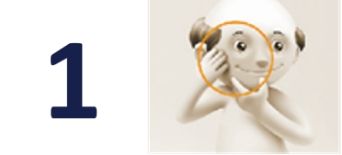
2. Check your scalp, using a comb to part your hair. If you do not have much hair, check your entire scalp very thoroughly.
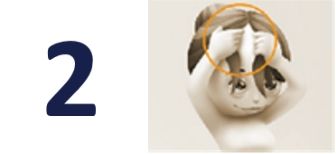
3. Check the front and back of your hands and in between your fingers.
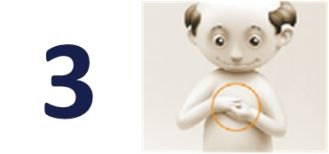
4. Then focus on your neck, chest and upper body. Women, be sure to check between and underneath your breasts.
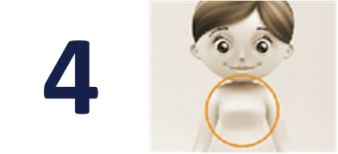
5. Bend your elbow to check your upper arm and armpits.
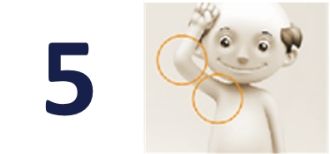
6. Use your hand mirror to check the back of your neck and your back, top and bottom.
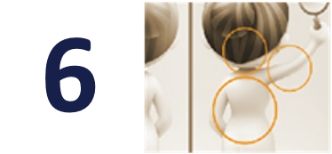
7. Check your buttocks and the back of your legs. Finish by checking the soles of your feet and in between your toes.
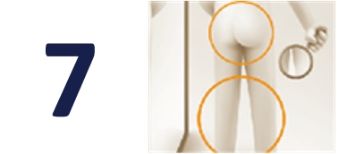
How to prevent skin cancer
Use your common sense when in the sun to minimise the risk of skin cancer.
Tips:
- Maximize protection measures for children (regular use of a high sun protection factor sunscreen (30 to 50), shirt and hat).
- Reapply sunscreen every two hours.
- Avoid sunbeds and tanning booths.
- Seek shade and stay out of the sun at its strongest (between 11am and 4pm).
- Protect your skin and eyes (hat, shirt, sunglasses).
- Don’t let your skin go red in the sun: avoid sunburn!
- Ensure you check your skin regularly, and visit your doctor or dermatologist if you find anything unusual.
For more information about the different types of skin spots and what they mean, visit our website: www.euromelanoma.eu




















